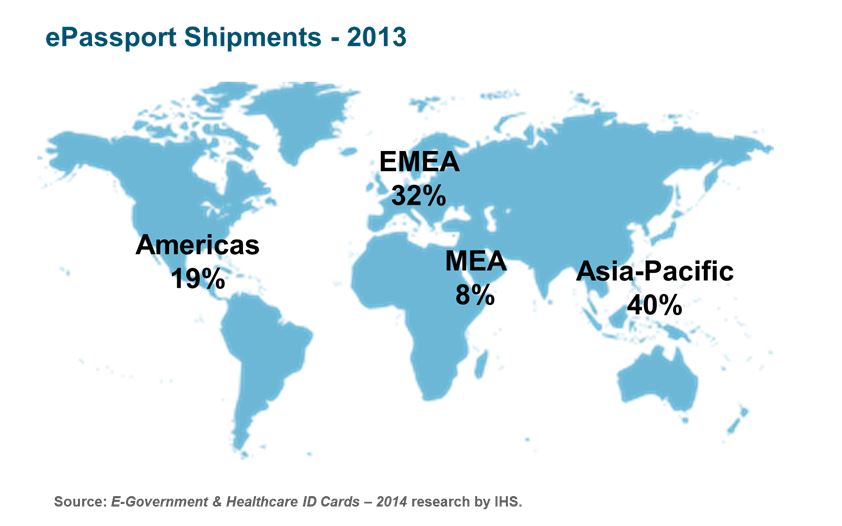An ePassport supplements the traditional paper passport by adding a microcontroller chip containing biometric information used to authenticate travelers’ identities. These chips use the same technology found in smart cards, which allows wireless data transfer of ID data. Biometric information stored on these devices includes facial, fingerprint, and iris recognition data.
Despite their capability to address security concerns at airports and border crossings, ePassports are set to experience weak shipment growth in the years ahead, according to research conducted by IHS Technology.

Global shipments of ePassports are predicted to rise 175 million units in 2019, an increase from 113 million in 2013. This represents a compound annual growth rate of 7.6% during the six-year time frame. Although expansion appears to be strong, it actually amounts to the slowest growth for any segment of the worldwide government electronic identification market.
On the other hand, shipments of electronic identification for use as drivers’ licenses, healthcare cards, and national ID credentials are expected to enjoy double-digit CAGRs until 2019. Shipments of ePassports will only rise half the rate of national IDs, which are the fastest-growing form of electronic government identification.
In 2013, the Asia-Pacific region accounted for the highest number of ePassport shipments, at 40% of the global market. Not far behind was Europe with 32%. The smallest region was the Middle East and Africa, estimated to have taken only 8% of global ePassport shipments in the same year.
Story via IHS.
Advertisement
Learn more about Electronic Products Magazine





